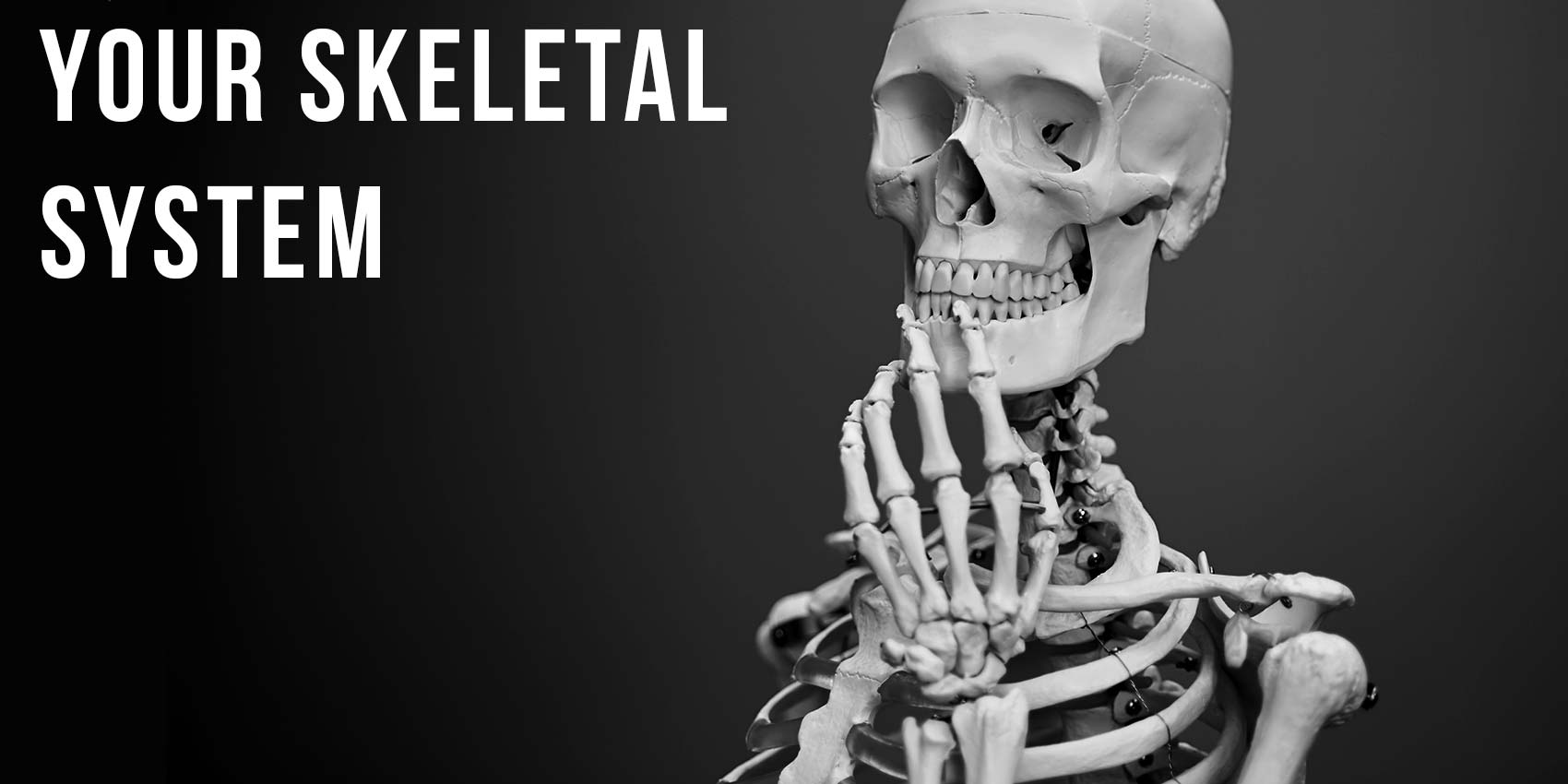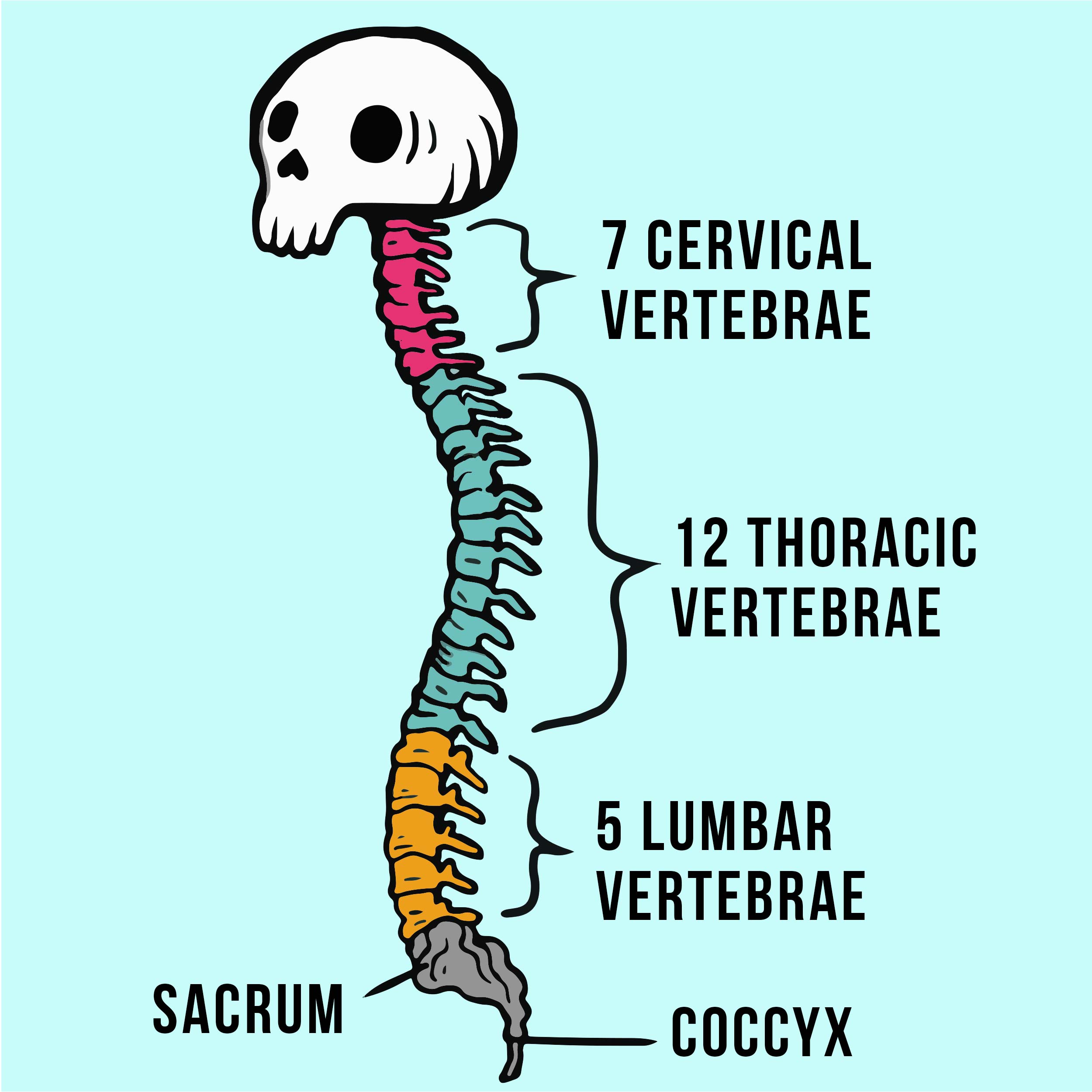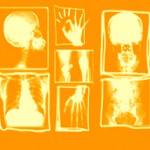08 Nov Your skeletal system

Main terminology
Your skeletal system (think skeleton) is made up of bones, cartilage, tendons and ligaments.
It provides support for the body, protects delicate internal organs and provides attachment sites for the organs.

DID YOU KNOW? Your skeleton does not reach full maturity until about 25 years of age. Your bones grow and even shrink over time. You reach “peak bone mass” between age 25-30, that’s when your bones will reach their biggest size and strength. After 40, your bones tend to lose mass, but proper nutrition and exercise can help to keep your bone mass.
(Source: https://orthoinfo.aaos.org/en/staying-healthy/healthy-bones-at-every-age/)
Your bone growth depends on genetic factors—so reconsider that stretch bar at night; there is not much you can do about your genes. However, it is supported by the foods you eat. Nutrients such as phosphorous, calcium, vitamins A, C and D are essential for proper growth of bone tissue.

DID YOU KNOW? 14 bones make up your face and they protect your sensory organs (vision, hearing, smell, taste and touch).
Here are some important terms to know:
A joint is where 2 or more bones are touching.
Ligaments connect bone to bone to prevent bones from dislocating (moving out of alignment with each other).
Tendons connect muscles to bones. Small tears or inflammation (called tendonitis) may occur with over use.
Cartilage is found within joints, inside your ear and within the discs of your back that make up your spine. Cartilage provides structure and support to your body’s other tissues but it is not as hard or rigid as bone. It is what gives your back (spine) flexibility.
A few main skeletal sections:
skull – spine – thorax – upper limbs – lower limbs
Your skull consists of the bones that protect your brain, including the bones of your face. Your skull is made up of flat bones connected together at joints.
Your spine includes the 7 vertebrae of the cervical spine, the 12 vertebrae of the thoracic spine, the 5 vertebrae of the lumbar spine, the sacral joint and the coccyx. You are likely sitting on your _____ right now.

Your thorax includes the 12 pairs of bones (ribs) that wrap around your mid section starting from your spine to your sternum (that flat bone down the center of your chest – go ahead and feel it, you know you want to make sure it’s there). 7 sets of ribs attach to the sternum and five ribs below those that attach differently (to the sternum carriage and each other, but don’t worry about that, TMI!) and your two lowest ribs actually float (meaning, they do not attach to your sternum).
When you learn about all of the organs tucked within the safe chamber of your thorax you will see why your rib cage is so important to your overall health.

DID YOU KNOW? When people have emotions, they often literally touch their thorax because it protects their heart. Crime investigators watch for this sort of movement when interrogating suspects. It’s a sign of an emotional response (maybe they are guilty, or not).
Your scapula is the flat bone below your shoulder that connects the upper limbs to the spinal column. Your pelvis (or hip bones) connects your lower limbs (legs) to your spinal column. It is considered a flat bone like the scapula.

DID YOU KNOW?: The pelvis is the part of the anatomy that clearly differentiates male from female. After millions of years of sitting in the earth, a scientist can tell you whether the skeletal remains are those of a female or male by the pelvis.




Post Question:
Have you ever broken a bone? Tell the story.
Answer the post question here
What's being said